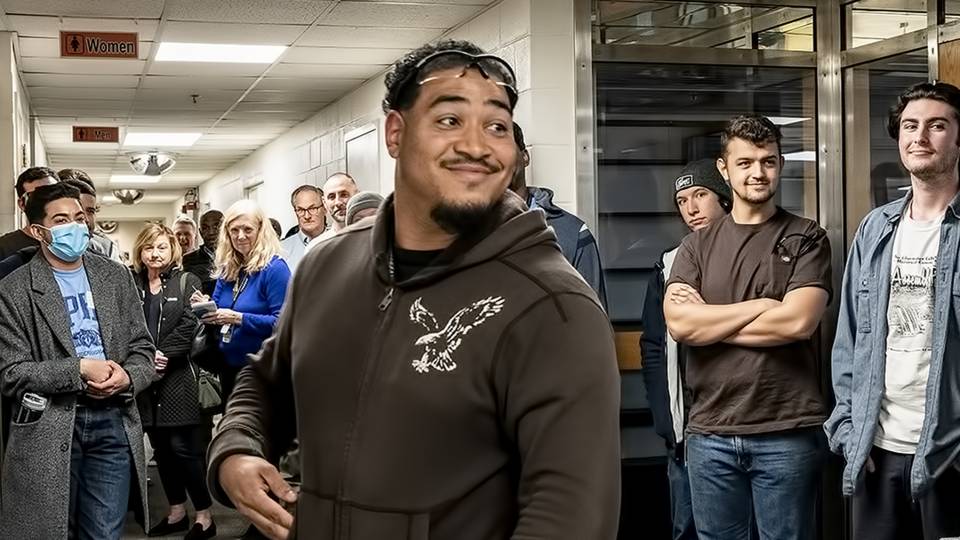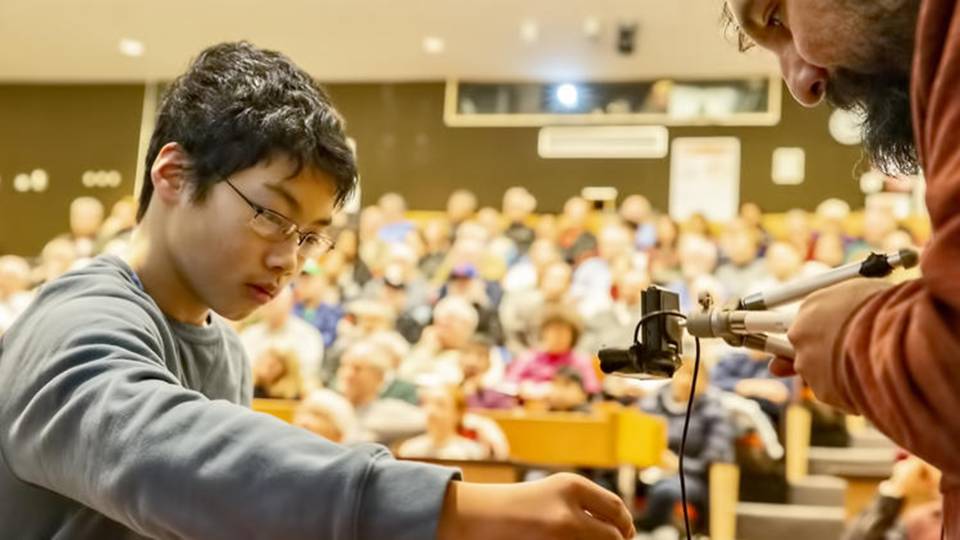Students at West Windsor-Plainsboro High School South in West Windsor, N.J., were enthralled as they watched and controlled a glowing pink plasma on a screen in their classroom through a live video stream of an experiment five miles away at the Princeton Plasma Physics Laboratory (PPPL).
The March 12 event marked the first public demonstration of an invention that fills a gap in online education by providing students and instructors anywhere in the world with a way to take part in a laboratory experiment. The Remote Glow Discharge Experiment (RGDX) provides a hands-on way for the students to learn about plasma — a hot, charged gas that is the fourth state of matter — and observe what happens when they change the conditions in the machine through the online controls.
Students in one class shouted out, "Whoa!" when the plasma first appeared.
"I think it's really cool!" senior Paige Kunkler said. "It's an opportunity to do something that's never been done before."
Online learning has become increasingly popular as Internet use has expanded and evolved over the past two decades. Now thousands of people are taking advantage of massive open online courses (MOOCs) and a variety of online courses available at every level from K-12 to graduate study, together with virtual simulations and YouTube science demonstrations. However, it is rare to find a physical experiment like the RGDX that is available for public use. PPPL, a collaborative research center funded by the Department of Energy and managed by Princeton University, created the experiment through its Science Education Department.
An online physics experiment for students and teachers
While the high school is only a few miles from PPPL in Plainsboro, Associate Research Physicist Arturo Dominguez pointed out that the RGDX could just as easily be used by students in Japan. Physics teachers could use the experiment in class, or online physics courses could use it as an experimental component.
"We're very excited about what we're unveiling," Dominguez told the class. "It's created specifically for students and those who are interested in science. We believe this is the next step in online education. It's bringing the laboratory to students."
Students and instructors using a personal computer can visit the RGDX website, sign on to the queue and get started with the experiment.

Students in an advanced physics class at West Windsor-Plainsboro High School South listen as Dominguez explains the Remote Glow Discharge Experiment, or RGDX.
The RGDX, developed by Dominguez and Andrew Zwicker, head of the Science Education Department, allows students to manipulate a plasma and make it glow inside a glass tube in a device at the Science Education Laboratory. Students see their results in real time through a streaming video of the plasma and can see how it changes as they use the controls to change the conditions inside the glass tube.
The tube is connected to a vacuum pump. It is encircled by two electromagnetic coils and connected to electrodes at either end of the device. Users can use the controls to change the pressure in the tube, the voltage between the electrodes and the strength of the magnetic field to create the plasma and to make it glow.
The website guides students through the experiment, taking them from relatively basic concepts such as "What is a plasma?" to more complex concepts such as "What does the electromagnet do to the plasma?" The tasks themselves range from relatively simple ones, as students set the controls to the suggested levels, to more advanced tasks, such as determining how much voltage makes the plasma glow. In the process, students learn the physics of plasmas and of pressure, electrode voltage and electromagnets. All these concepts are related to the study of plasma physics at PPPL, where researchers are developing the science required to produce magnetic fusion as a clean and abundant source of energy for generating electricity.
"There's nothing like it in the world," Zwicker said. "The idea of doing something similar for educational purposes has been around for some time, but this is the first prototype of a fully open remote-controlled laboratory available for learners of all backgrounds. The best way to learn science is by doing, and this is the next step for online science education."

Paige Kunkle (foreground) and Snigdha Kasi watch a plasma created by the RGDX change as Kunkle manipulates the controls online.
Students and teachers were enthusiastic about the RGDX demonstration.
"I think it's amazing," said Barbara Fortunato, the high school physics teacher whose classes tried out the device. "I think it's great to bring plasma as a topic to high school science because it really doesn't appear anywhere else."
High school junior Snigdha Kasi said the experiment brings a new dimension to her class. "We get taught about this stuff and this just opens it up and lets people look into something so much deeper," she said. "I'm really excited to see where it goes from here. There are so many different possibilities!"
The RGDX currently works on PC and Mac personal computers, and PPPL plans to add features that will allow users to access the site using tablets and smartphones.
After the demonstration with the students in West Windsor, Dominguez placed a video conference call that appeared on the screen to Liutauras Rusaitis, a software developer in the Science Education Laboratory who works on the RGDX. Rusaitis showed the students laboratory and the RGDX machine through a Google Hangout session.
"I was here when you were controlling the experiment and it felt sort of magical," he said.

Above, a plasma glows in the RGDX. The experiment involves a glass tube connected to a vacuum pump, encircled by two electromagnetic coils and linked to electrodes at either end of the device. Users can use the controls to change the pressure in the tube, the voltage between the electrodes and the strength of the magnetic field to create the plasma and to make it glow.






